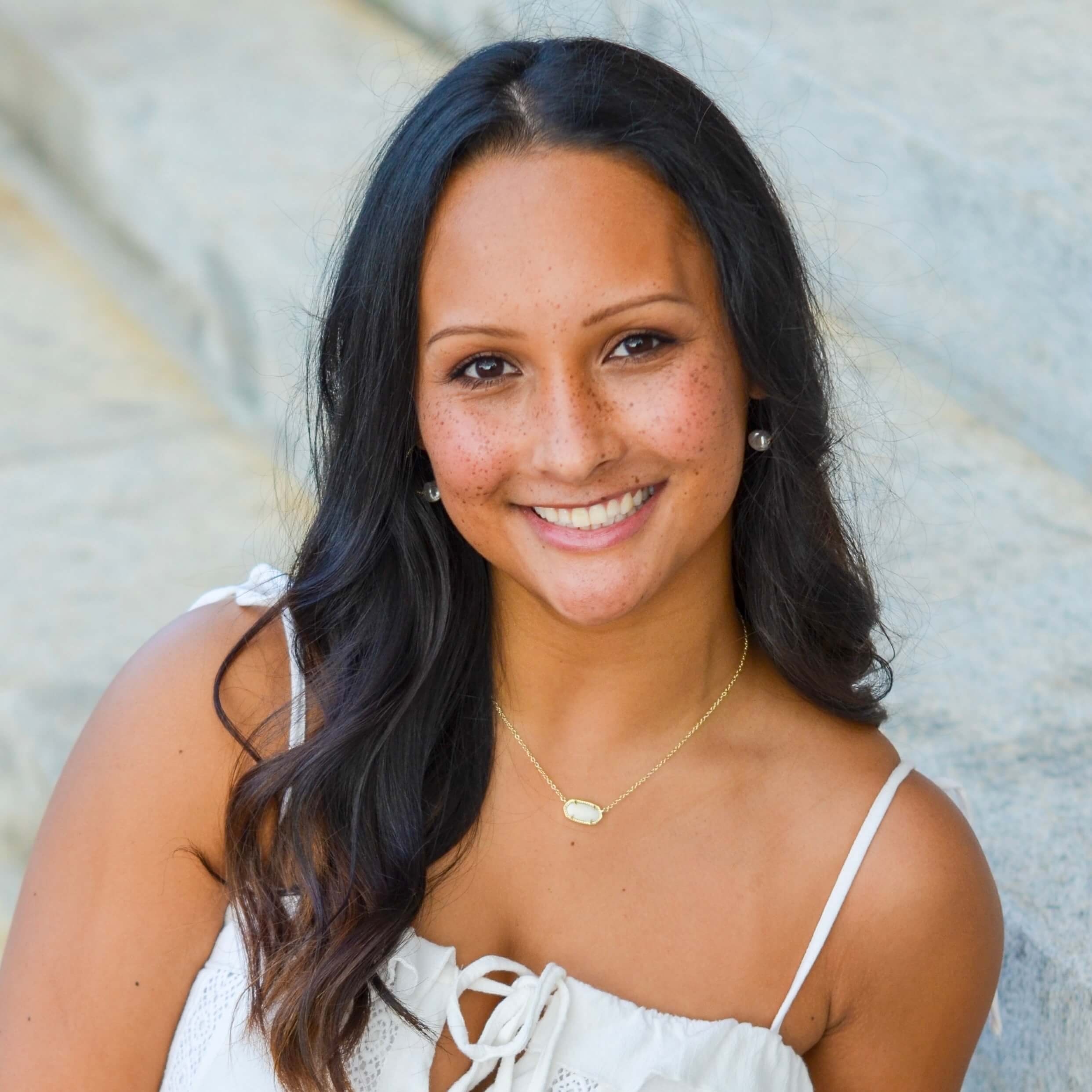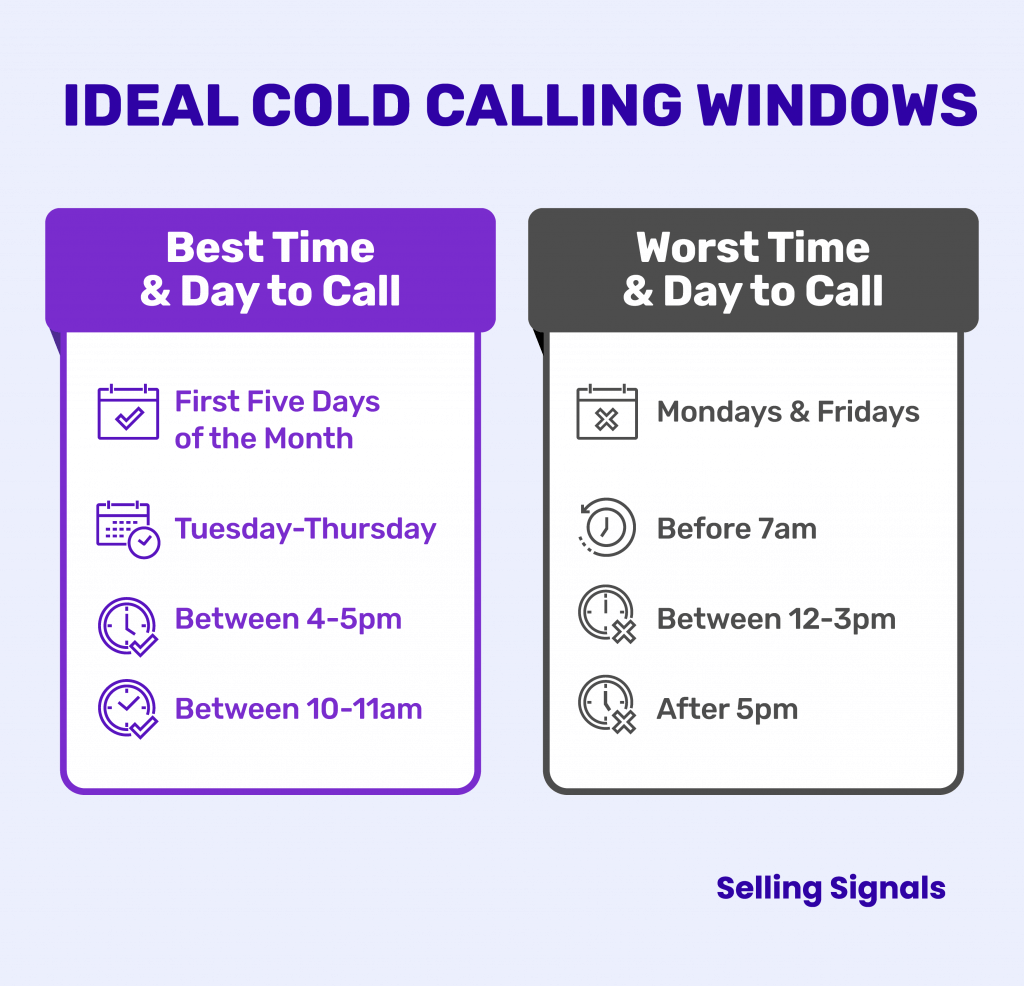-
News & Trends -
Sales -
Marketing Related Topics -
B2B Software Guides Related Topics -
Free Tools & Resources -
- About Us About Us


The goal of cold calling is to begin qualifying leads and potentially confirm them for an additional sales meeting, demo, or presentation. This means catching the lead when they’re available to take your call and in a good mood is vital. There's a data-backed strategy behind the peak days and times to sit down and cold call that leads to an overall increase in answer rates that proves mid-week and mid-morning are the ideal windows for most industries.

Cold calling is a tried and tested lead generation tactic that gets sales reps directly on the phone with leads. On average, it takes about eight calls to finally get a prospect on the phone. To optimize your cold calling efforts and increase your answer rates, find the ideal windows and pockets of time that leads are most available to answer your call.
The best time and days to cold call are:
These time windows heavily depend on if you’re cold calling as a B2B or B2C rep. Stay within respectable business hours when calling a B2B lead, while B2C leads potentially accept evening calls. Keep your lead and their experience in mind while strategizing how to cold call. Put yourself in their shoes to decide if it’s an appropriate time and if you’d feel inclined to answer a business call. Consider the time of year, month, and even if it’s too close to a weekend.
Even after you’ve perfected your cold call script and are prepared to begin qualifying leads on a cold call, calling at unreasonable times or days can deter leads from answering the phone. Don’t let the time or day you’re calling be the reason you aren’t seeing the answer rates and cold calling success you’re after.
Times and days to avoid cold calling are:
Leads might pick up in these less than ideal windows, but the moment you say where you’re calling from, their attitude might shift and immediately give you an objection, with time being the reason. If you’re always calling a lead on Fridays at 4:30pm, the next time they see your number, even if it’s at a more reasonable time, they’ll associate your call as an annoyance.
Additionally, any wireless phone owner can opt into the Federal Communications Commission’s Do Not Call registry to minimize the telemarketing calls they receive. Cross-check the registry with your lead’s phone number before calling. When you’re in these cold calling downtimes, continue using sales prospecting techniques like cold emailing or social selling to continually target leads.
Always record and reference your lead’s location and time zone in your CRM just in case you’re calling outside your own time zone. I’d often cold call companies in California while I was on Eastern time, so even though it was 9am for me and I was ready to start calling, I knew to wait a few hours to make up the difference.
To take your cold calling up a notch and accomplish an increase in answer rates, take into account your specific industry patterns. Consider the day-to-day of your lead. Visualize their week, month, or even quarter and what industry happenings are occuring like expected spikes in sales or expected lulls in business. This knowledge can help you plan when they’re most likely to answer your calls and if they’d be interested in your business.
Technology or fintech businesses hold scrum meetings every day or once a week with entire teams, including decision makers. Since scrum stand up meetings typically happen at the beginning of the day, try to catch your leads right after that meeting between 8:45 and 9:15am and before they’re heads down in work or in their next meeting. That way, they take your call while walking to their desk or if they’re working from home, making a cup of coffee.
When I was an account manager, I’d cold call high-level fintech managers and VPs. I’d try to put out as many calls as possible between 7:45 and 8am, trying to get ahold of my leads as they’re walking into the office. I would call it “8 before 8,” calling at least eight leads on my call sheet before 8am.
The real estate industry is one of the few industries that isn’t confined to the typical 8-5 work day. It’s considered normal for agents and other industry workers who might cold call potential clients to call after 5pm. Try to catch your leads on their commute home but before they start their evening tasks to not disturb or annoy them, which can be between 4pm and 6:30pm.
Law firms — big and small — often practice cold calling, especially if there’s the possibility of a target client or company facing legal problems. Representatives for the firm might call leads at that company to offer their legal services and expertise. Since you’re calling a lead that’s facing a considerable problem, cold call legal leads on Thursdays between 10-11am or 4-5pm to present your service as a true solution, especially as the week comes to a close.
Similar to calling for legal services, cold calling within the insurance industry means you’re targeting people who might be experiencing hardships. Insurance is ideally a solution purchased proactively, but it makes sense to target leads who’re in direct need of your service. To be respectful of their situations, the ideal window for insurance cold calling includes weekdays between 10am and noon, before lunch, and between 4-6 in the evenings.
Nonprofits might cold call businesses or individual contributors for donations or to spread the word about upcoming events or fundraisers. Leads who are decision makers for businesses and their partnerships with nonprofits might be more inclined to answer and entertain cold calls at the end of the calendar year and before tax season in April. So, call those leads before tax season and within the peak daily windows, between 10-11am or 4-5pm.
B2B consultants see the most cold call success when they call within the peak daily windows. This includes between 10-11am before the lead is off to lunch and between 4-5pm before the lead leaves for the day. Research the state of your lead’s company beforehand and take note if the business that was just acquired by another entity is in the midst of a major transition, which usually leads to a decrease in answer rates while they adjust internally and the dust settles.
These are only a few of the industries that experience cold calling in an attempt to generate leads. The best way to find the ideal window to cold call in the industry you target is to reference the data around your own cold call attempts by seeking out the time and days you’ve seen the most success and to hypothesize why your leads might’ve been more inclined to answer at that time.
When sales reps aren’t strategic with their cold calling efforts, cranking out call after call with no answer can be discouraging and lead to burnout. To work smarter, reserve cold calling to specific windows of time and of opportunity to increase your overall answer rates. This includes the time of day, week, and even month. Check out our cold calling statistics article for more data on how both buyers and reps feel about it, mistakes to avoid, and some of the challenges.


Allyssa is a sales writer with a background in B2B sales and account management. After earning her degree in English and communications, she spent her selling career supporting Fortune 1000 IT and finance companies including Bank of America, Wells Fargo, and Credit Karma. As a staff writer for Selling Signals, her specialties include lead nurturing, lead generation, and sales software topics. When she's not writing or updating articles, you can find Allyssa writing poetry, traveling, or picking up any new creative hobby.

Selling Signals delivers actionable advice for sales and marketing professionals. Learn strategies that help you hit targets, strengthen customer relationships, and win more business. Get expert advice on lead generation, sales processes, CRM software, sales management, and account management directly to your inbox.
Property of TechnologyAdvice. © 2025 TechnologyAdvice. All Rights Reserved
Advertiser Disclosure: Some of the products that appear on this site are from companies from which TechnologyAdvice receives compensation. This compensation may impact how and where products appear on this site including, for example, the order in which they appear. TechnologyAdvice does not include all companies or all types of products available in the marketplace.